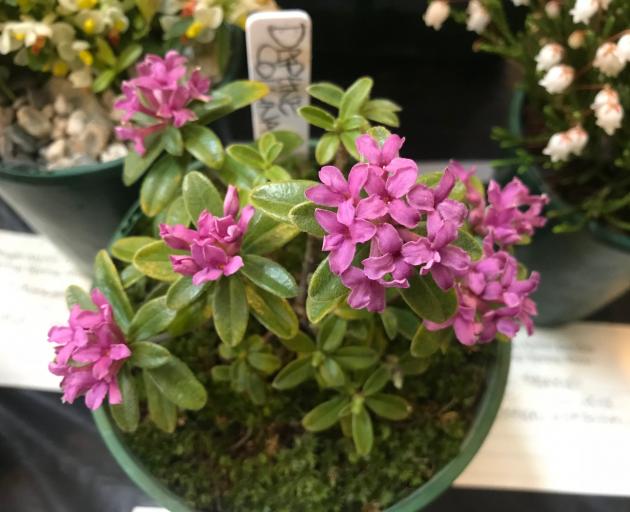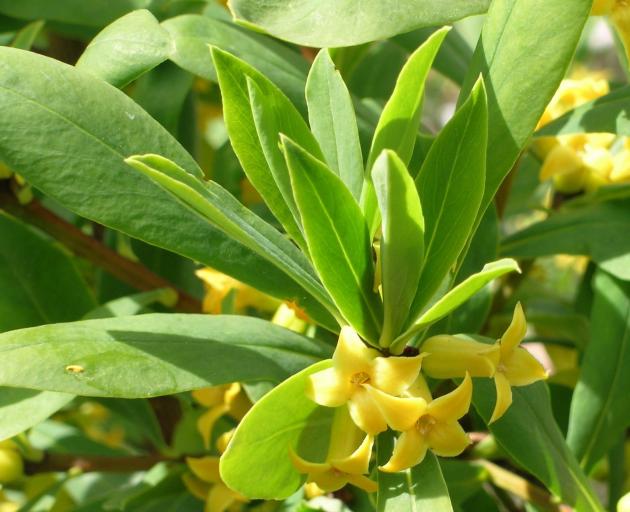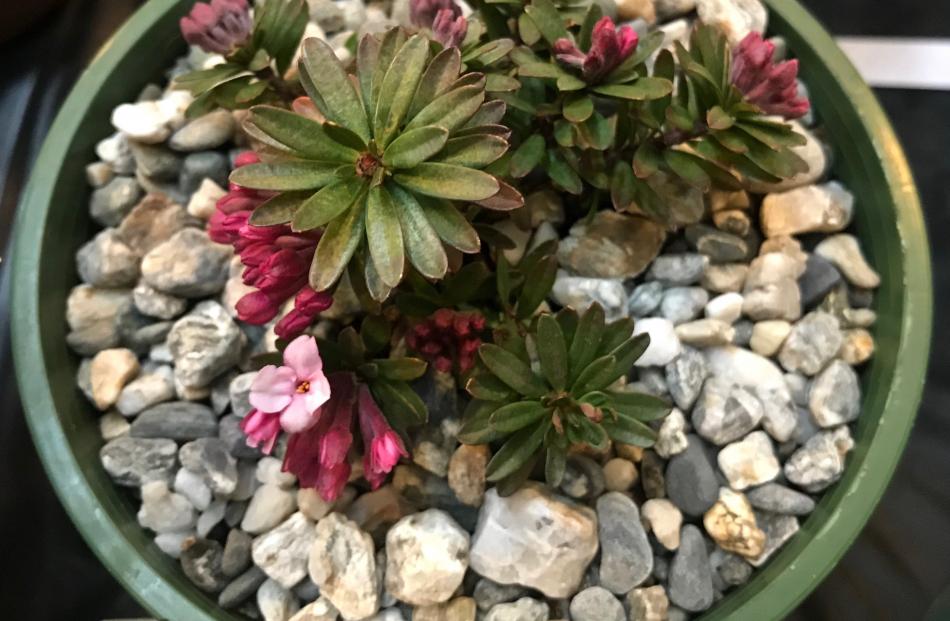Gillian Vine gets a whiff of winter.
Some of the best of the perfumed shrubs flower in winter, among them the daphnes, a genus of more than 70 species of which about a dozen are well-known ornamentals.
Mainly evergreens, they originate from Asia, Europe and North Africa, and range in size from tinies such as Daphne cneorum and D. collina, suitable for rockeries or containers, to D bholua (up to 5m) and the shorter D. odora (2m-3m).
Most have pink or white flowers, although the rare D. giraldii from China has yellow blooms. What makes them all stand out is they flower in winter. Their perfume is a delight on dull days.
Usually in full bloom in early July, this year my D. bholua flowered in June when everything else looked dreary. The perfume was fantastic, especially on those unseasonably warm days we had, and could even be smelled on wet days.
With a preference for acid soils, they can be teamed with other lime-haters, including sweet box (Sarcococca ruscifolia), rhododendrons and camellias, with which they share a preference for well-drained, moist soil and some shade.
The glossy dark green foliage of D. bholua and D. odora looks good year round and both these daphnes have straight trunks and rounded heads, so are ideal for growing behind smaller rhododendrons. Suitable ground covers include lily of the valley (Convallaria pseudomajalis), Japanese spurge (Pachysandra terminalis) and Ajuga reptans.

Mark Jury, of Taranaki, crossed D. bholua and D. odora and after years of work produced the pink-flowered Perfume Princess, which, since its release in 2015, has been a hit worldwide. White-flowered Perfume Princess White was a later introduction.
Their popularity is based on several factors. Firstly, they are tougher than D. odora, which has a reputation for dying young. With larger flowers over a much longer period and an ability to flower along the stems, it is understandable why these two daphnes are so highly regarded.
As Mr Jury’s work shows, daphne breeding is a slow process. English nurseryman and daphne specialist Robin White took 30 years to develop Eternal Fragrance, which has proved particularly popular in Australia because it tolerates full sun and will flower almost all year. Eternal Fragrance Spring Pink has deeper pink blooms. They are suitable for lower (1m) hedging or as container specimens.
If your taste or garden size runs to something smaller, D. burkwoodii Variegata also grows to about 1m, its pink flowers appearing from late winter to early spring. With its cream-edged leaves, Variegata makes an appealing container plant for a shady spot.
One of the few deciduous species is D. mezereum, once common in the South but nurseries now rarely seem to offer it. Growing to about 1.5m by 1.5m, the flowers appear before the light green foliage, which turns gold in autumn.
Also deciduous is D. giraldii, growing 80cm-90cm with yellow flowers smelling more vanilla-like than the usual daphne perfume.

For those who appreciate the truly tiny, two European rockery daphnes stand out, evergreens D. petraea (10cm-12cm) and D. cneorum (up to 20cm). Both have rich, purplish pink, highly scented flowers in winter.
And if you fancy doing something different with your daphne, imitate the Nepalese and Bhutanese and turn it into paper. Two species, D. bholua and D. papyracea, are used to make lokta or resho.
D. papyracea is used in traditional medicines, too, but given that all daphnes are poisonous, they may kill rather than cure.

















